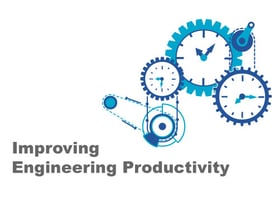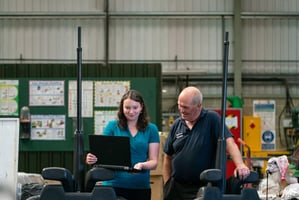What is Human Augmentation? Human augmentation (a.k.a. Human 2.0) seeks to enhance and exceed the...
Bioprinting: An Engineering Problem
At any given moment more than 100,000 people in the United States alone are awaiting an organ transplant, and more than a dozen people a day die while waiting for an available organ. There just are not enough donors to meet the demand for organs. It is a tragedy without a viable solution—until now.
In the 1980s, scientist Charles Hull invented a three-dimensional printing process he termed “sterolithography.” His initial process entailed laying down a layer of liquid material that would subsequently harden, and then a successive layer of material would be added on top it until the layers formed the desired shape.
With the introduction of innovative new materials, his idea transformed manufacturing—especially rapid prototyping. Plastics and various types of metals were successfully introduced into 3D printing, making it possible to create shapes that were nearly impossible to manufacture otherwise and removing the need for many different types of tooling. Now, with the successful introduction of biomaterials, such as stem cells into the process, 3D printing is on the verge of transforming medicine.
Scientists are on their way to creating the first working 3D printed organs. They have already successfully printed several different types of human tissues, such as skin, cartilage, bladder, heart, kidney, and lung tissue. But 3D printing an organ is an entire magnitude of a more difficult problem. Organs such as the heart or liver contain more than one type of tissue and contain many different types of internal structures. It takes a fetus approximately 9 weeks from fertilization to build a fully formed heart, but scientists haven’t yet perfected the process in the lab of how to form a right sized heart for an adult with the same strength and performance as a heart grown in the womb.
In order to create a working organ, researchers must overcome many different types of technical issues. Mechanical issues such as printing speed, pressure, temperature, and even the size of the nozzle of the printer, as well as chemical and biological issues such as tissue strength and composition. Solving all of these issues will require multiple different disciplines such as software and mechanical engineering, bioscience, and chemistry.
The Material
Scientists are testing different types of cells to create the various tissues needed to print an organ. Stem cells show great promise as a foundation material. Researchers are learning to transform stem cells into other types of cells, and use them as the primary material to print tissue. Still, much work is needed before they understand how the process works, and what best practices require for the process of printing an organ.
The Design
Organs have both biological and mechanical functions, and understanding these functions is a key challenge. Scientists have yet to learn the purpose of all cellular activity within the organs, let alone replicate those functions in a printing process, but they are learning more everyday.
In April of 2019, Israeli researchers 3D printed a tiny thimble sized heart using human cells. The heart did not beat, but for the first time they were able to demonstrate that blood vessels and the chambers of the heart and other structures can be formed using human cells and the 3D printing process. It was a tiny step forward on the road to a fully functioning organ.
Some design processes utilize a type of scaffolding to help direct the formation of the cellular tissue into the right shape and size. Using the same idea, it may be possible to construct organs with electronic implants, where researchers can receive real-time feedback from organ performance after the organs are transplanted.
Personal Medicine
3D printing organs has the potential to revolutionize personal medicine. The idea of personalized medicine has been around for more than a century. Doctors gather as much information about an individual as possible, using it to form the best individualized treatment plan. As researchers learn more about how to harvest tissue from a recipient, they will be able to use that material to grow the foundation material for a printed organ. Hence, the resulting organs will have the same genetic code as the recipient. The hope is that their bodies will accept the new organs, as they will be a replica of their previous organ, and their immune system will accept it as its own rather than reject it as a foreign object.
The potential to save lives through bioprinting is enormous, by reducing wait times for new organs and avoiding the complications of organ rejection. It is a field of science that deserves attention and resources for decades to come.



